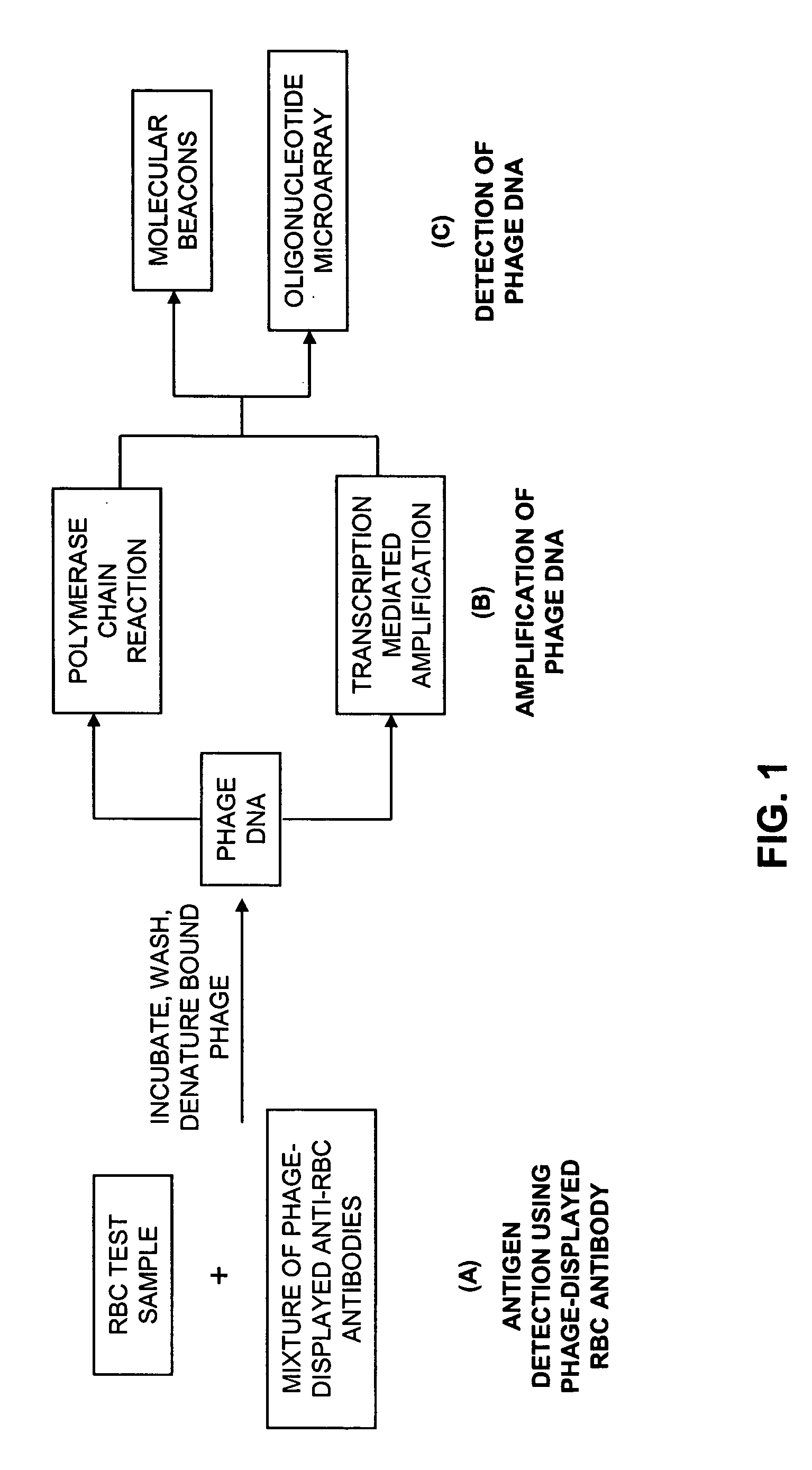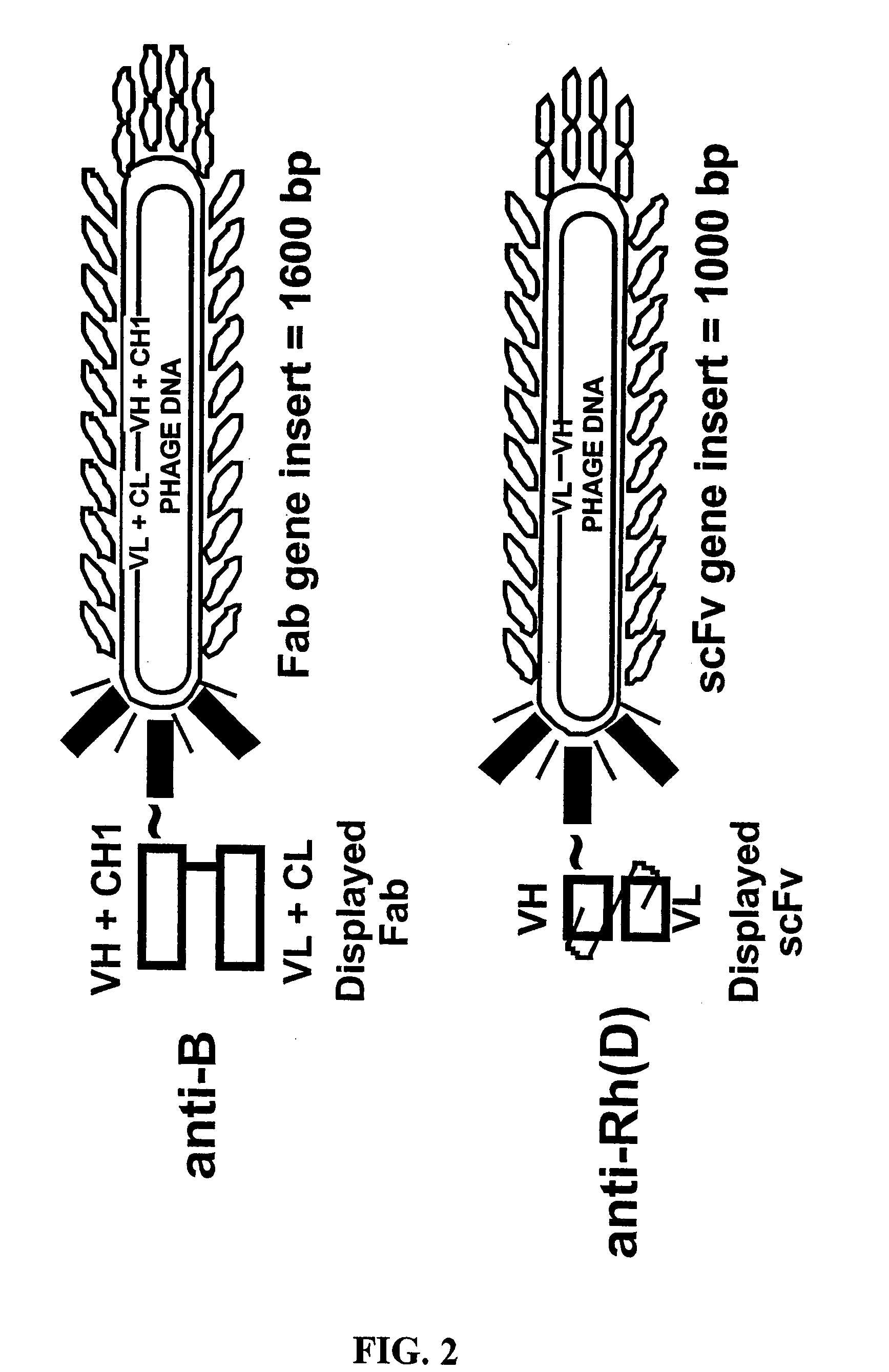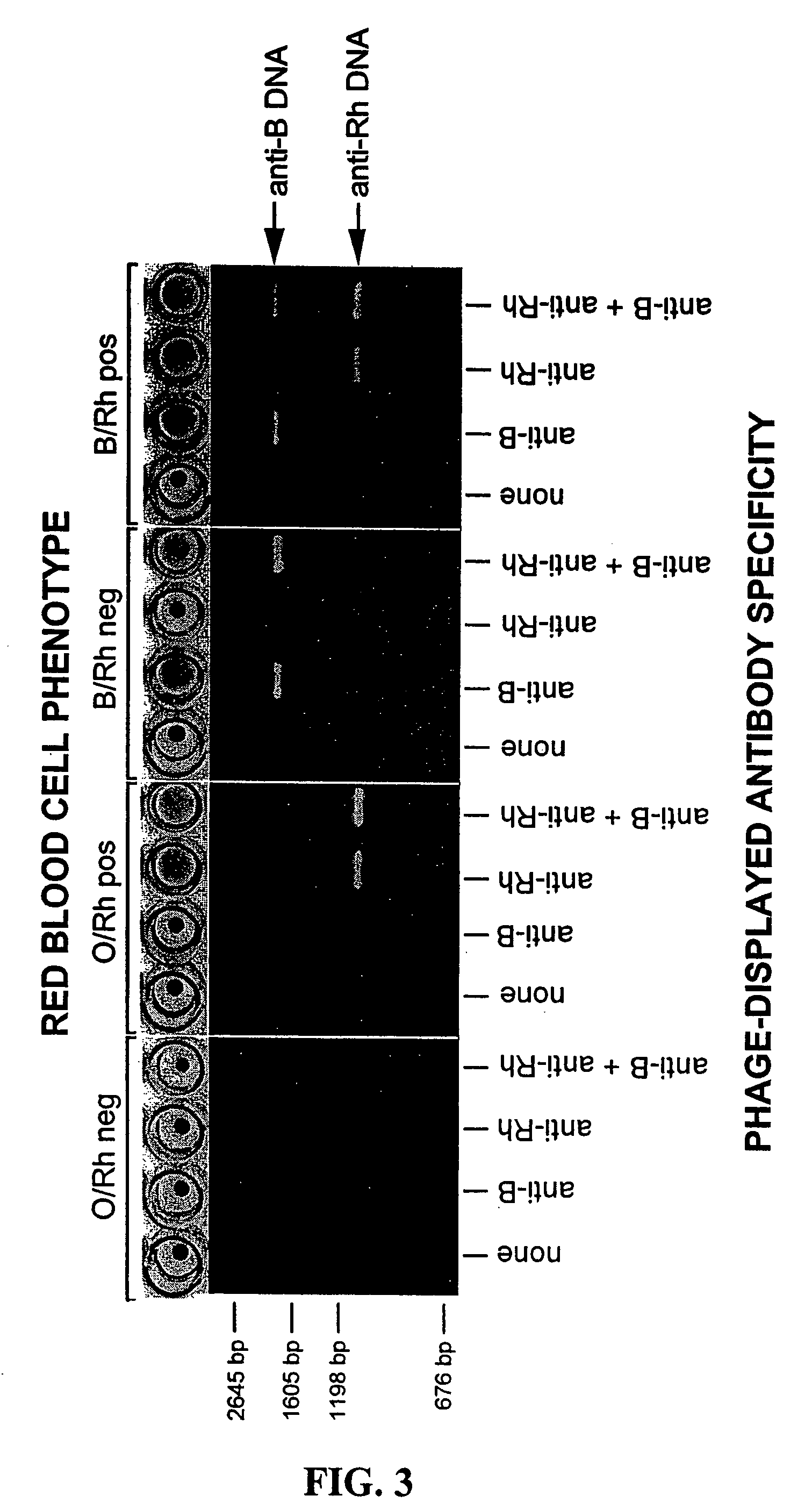Compositions, methods and kits for detection of an antigen on a cell and in a biological mixture
a technology of antigen detection and biological mixture, which is applied in the field of compositions, methods and kits for detection of antigen on cells and in biological mixtures, can solve the problems of laborious assay systems of this type, preventing the development of “point-of-care” testing devices, and blood donation facilities, blood banks,
- Summary
- Abstract
- Description
- Claims
- Application Information
AI Technical Summary
Benefits of technology
Problems solved by technology
Method used
Image
Examples
examples
[0167] Current technologies used in blood collection facilities, blood banks, and transfusion service laboratories are extraordinarily labor intensive, prone to human error, and an order of magnitude more expensive per test that those in other clinical laboratories. Coupled with a growing shortage of skilled medical technologists, dwindling supplies of human plasma-derived phenotyping reagents, and an inherent difficulty in fully automating 1950's-based agglutination methodologies, the ability to perform the hundreds of millions of pre-transfusion tests per year in a rapid, accurate, and cost-effective manner is a significant challenge.
[0168] The present invention relates to the development of novel molecular technologies and reagents pertinent thereto, to develop a new class of renewable, inexpensive, high-quality blood bank testing reagents that function in a rapid, high-throughput, automatable assay system.
[0169] A central feature of the novel technologies disclosed herein are ...
PUM
| Property | Measurement | Unit |
|---|---|---|
| size | aaaaa | aaaaa |
| concentrations | aaaaa | aaaaa |
| time | aaaaa | aaaaa |
Abstract
Description
Claims
Application Information
 Login to View More
Login to View More - R&D
- Intellectual Property
- Life Sciences
- Materials
- Tech Scout
- Unparalleled Data Quality
- Higher Quality Content
- 60% Fewer Hallucinations
Browse by: Latest US Patents, China's latest patents, Technical Efficacy Thesaurus, Application Domain, Technology Topic, Popular Technical Reports.
© 2025 PatSnap. All rights reserved.Legal|Privacy policy|Modern Slavery Act Transparency Statement|Sitemap|About US| Contact US: help@patsnap.com



